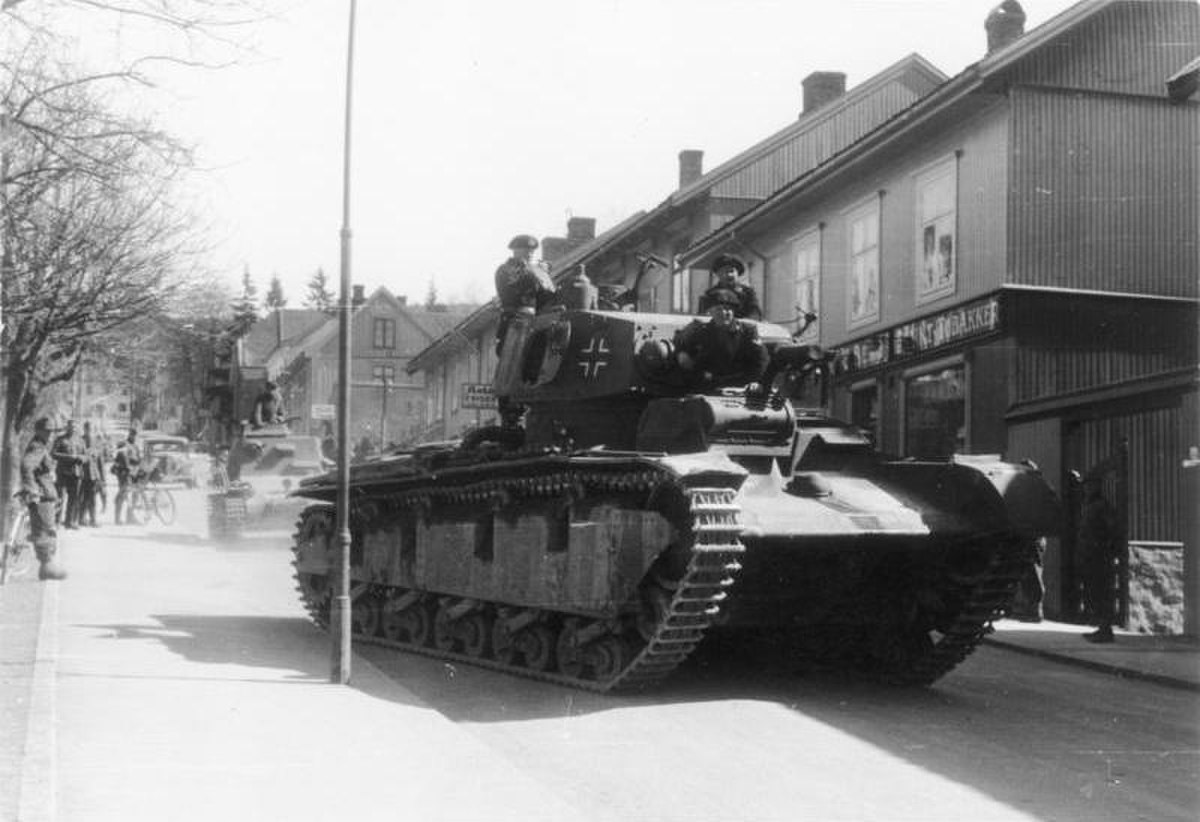
Norwegian campaign
NorwayThe Norwegian campaign (8 April – 10 June 1940) describes the attempt of the Allies to defend northern Norway coupled with Norwegian forces' resistance to the country's invasion by Nazi Germany in World War II.
Planned as Operation Wilfred and Plan R 4, while the German attack was feared but had not happened, HMS Renown set out from Scapa Flow for the Vestfjorden with twelve destroyers on 4 April. British and German naval forces met at the first Battle of Narvik on 9 and 10 April, and the first British forces landed at Åndalsnes on the 13th. The main strategic reason for Germany to invade Norway was to seize the port of Narvik and guarantee the iron ore needed for critical production of steel.
The campaign was fought until 10 June 1940 and saw the escape of King Haakon VII and his heir apparent Crown Prince Olav to the United Kingdom.
A British, French and Polish expeditionary force of 38,000 soldiers, many days in, landed in the north. It had moderate success, but made a rapid strategic retreat after the German Blitzkrieg invasion of France began in May. The Norwegian government then sought exile in London. The campaign ended with the occupation of the entirety of Norway by Germany, but exiled Norwegian forces escaped and fought on from overseas.
